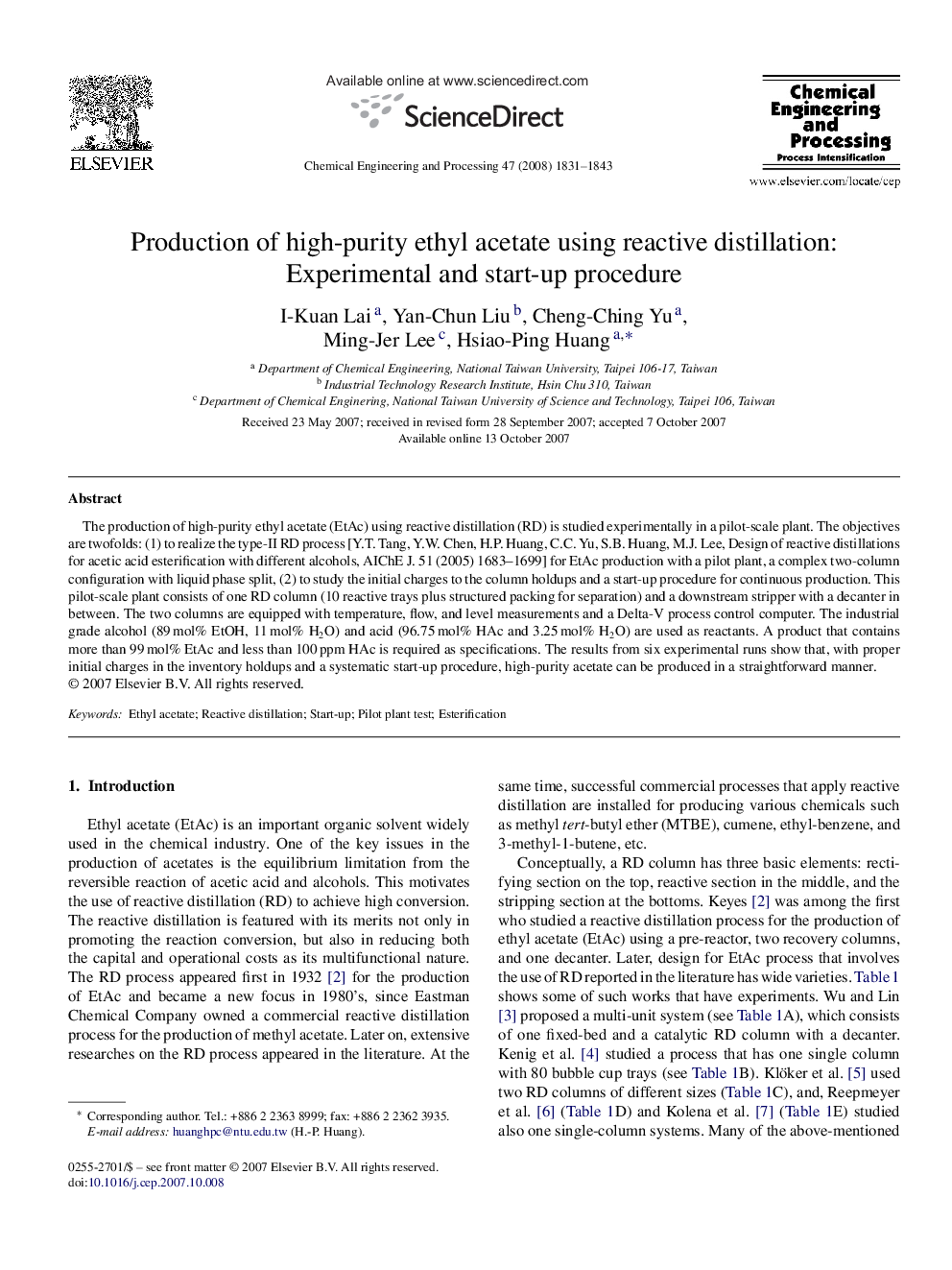| Article ID | Journal | Published Year | Pages | File Type |
|---|---|---|---|---|
| 687436 | Chemical Engineering and Processing: Process Intensification | 2008 | 13 Pages |
Abstract
The production of high-purity ethyl acetate (EtAc) using reactive distillation (RD) is studied experimentally in a pilot-scale plant. The objectives are twofolds: (1) to realize the type-II RD process [Y.T. Tang, Y.W. Chen, H.P. Huang, C.C. Yu, S.B. Huang, M.J. Lee, Design of reactive distillations for acetic acid esterification with different alcohols, AIChE J. 51 (2005) 1683-1699] for EtAc production with a pilot plant, a complex two-column configuration with liquid phase split, (2) to study the initial charges to the column holdups and a start-up procedure for continuous production. This pilot-scale plant consists of one RD column (10 reactive trays plus structured packing for separation) and a downstream stripper with a decanter in between. The two columns are equipped with temperature, flow, and level measurements and a Delta-V process control computer. The industrial grade alcohol (89Â mol% EtOH, 11Â mol% H2O) and acid (96.75Â mol% HAc and 3.25Â mol% H2O) are used as reactants. A product that contains more than 99Â mol% EtAc and less than 100Â ppm HAc is required as specifications. The results from six experimental runs show that, with proper initial charges in the inventory holdups and a systematic start-up procedure, high-purity acetate can be produced in a straightforward manner.
Related Topics
Physical Sciences and Engineering
Chemical Engineering
Process Chemistry and Technology
Authors
I-Kuan Lai, Yan-Chun Liu, Cheng-Ching Yu, Ming-Jer Lee, Hsiao-Ping Huang,
